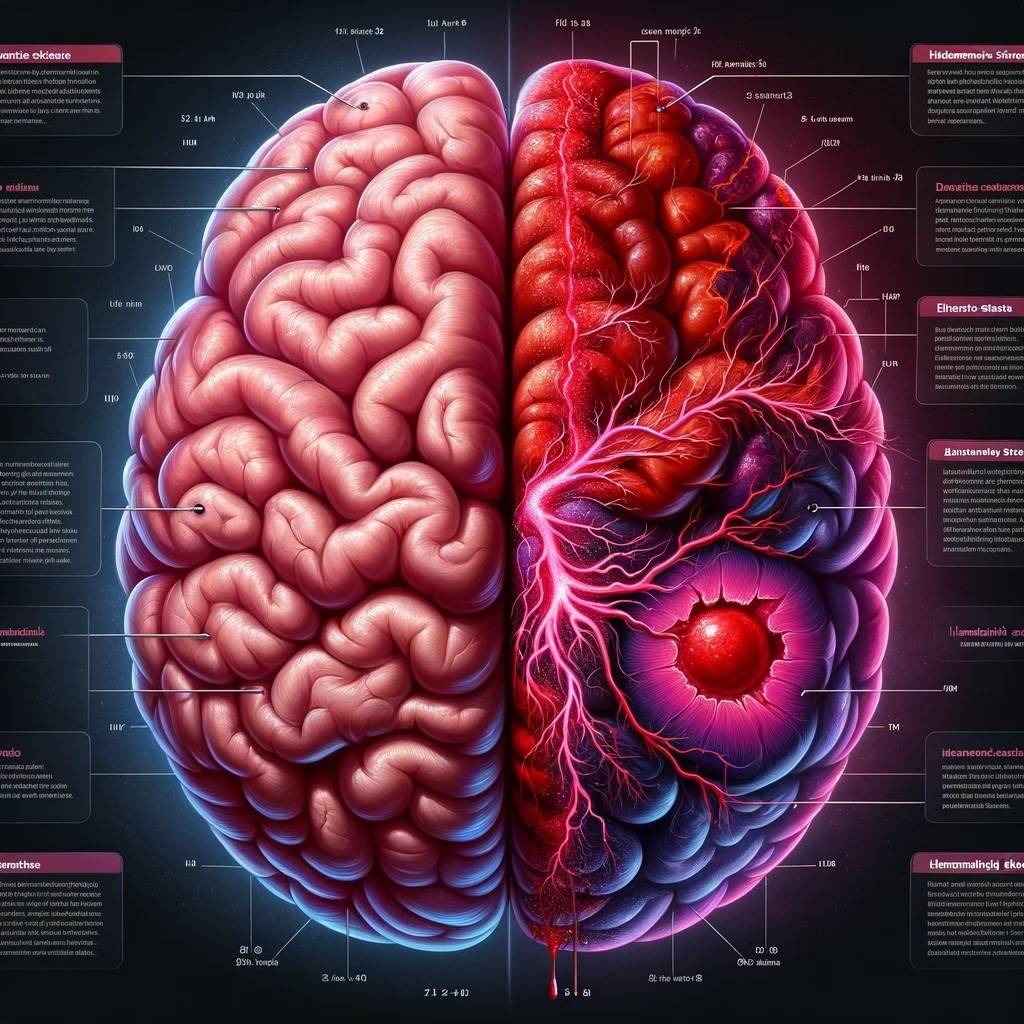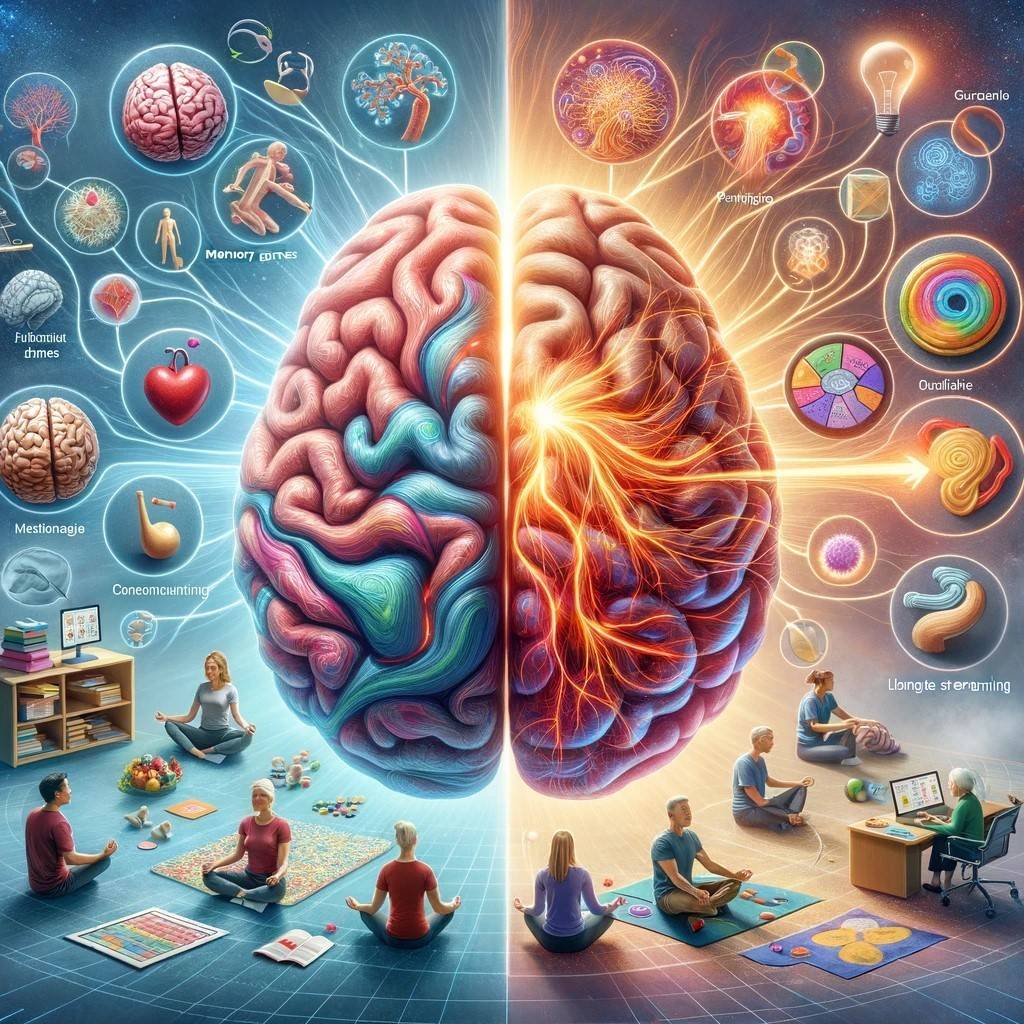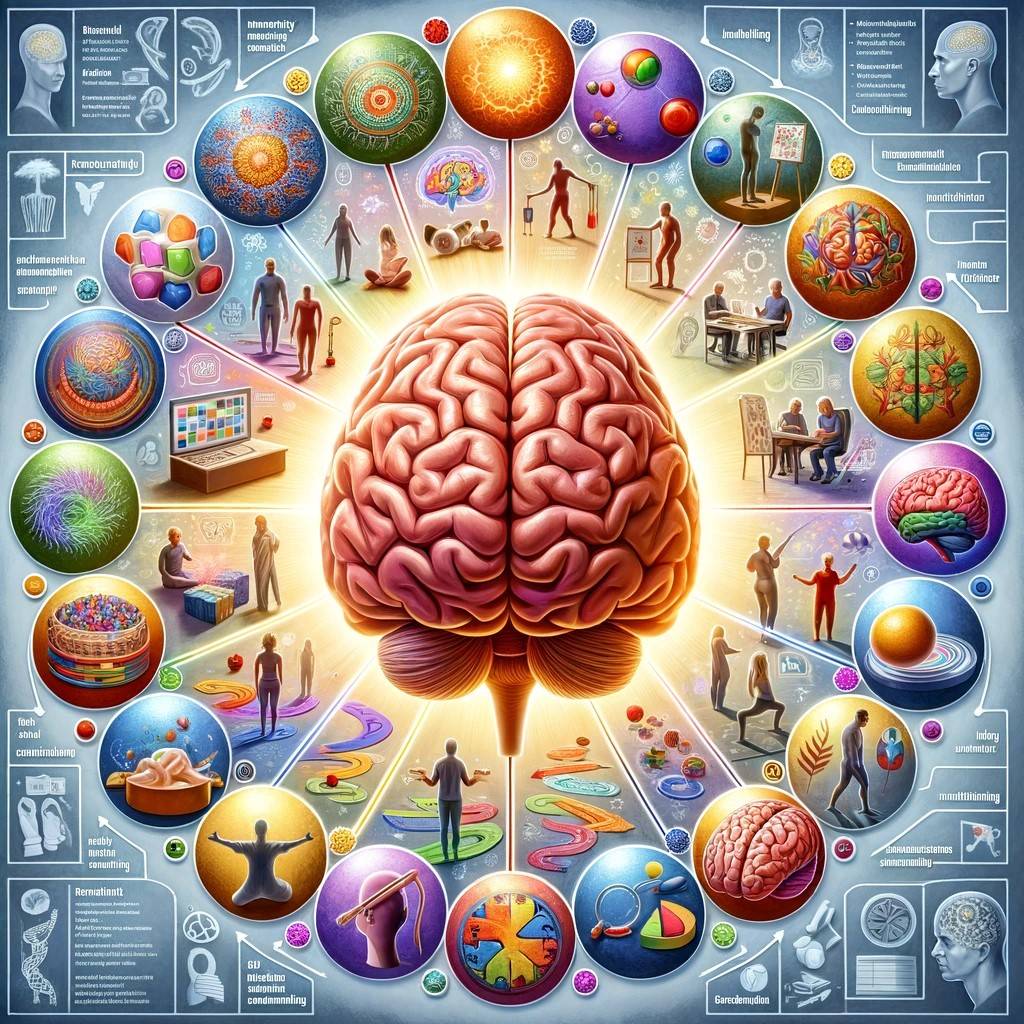15 Brain Exercises for Stroke Recovery: Rebuilding Mind and Life
Explore 15 effective brain exercises for stroke recovery, revitalizing your mind and life. Regain strength with expert techniques.
Introduction to Brain Exercises for Stroke Recovery
Every year, strokes affect millions of individuals worldwide, often leaving survivors with long-term physical and cognitive impairments. The journey to recovery is challenging, yet imperative, to regain independence and improve quality of life. Brain exercises play a pivotal role in this recovery process, aiding in the reestablishment of neural connections and the enhancement of cognitive functions. This article dives deep into 15 brain exercises tailored for stroke recovery, providing a comprehensive guide to help survivors rebuild their minds and lives.
Stroke survivors, caregivers, and healthcare professionals alike can benefit from this extensive resource, designed to empower and facilitate recovery. As we delve into the myriad of exercises, it is crucial to bear in mind that consistency, perseverance, and a positive mindset are key components of successful rehabilitation.
Understanding Stroke and Its Effects on the Brain

Brain Exercises for Stroke Recovery?
A stroke occurs when the blood supply to a part of the brain is disrupted, resulting in the death of brain cells and impaired functionality in the affected area. Strokes can manifest in various forms, primarily categorized as ischemic (caused by a clot) or hemorrhagic (caused by bleeding). The aftermath of a stroke largely depends on the affected brain region and the promptness of medical intervention.
Strokes can inflict damage on diverse cognitive functions, including memory, attention, speech, and motor skills. The complexity of the brain and the interconnectedness of its regions mean that the effects of a stroke can extend beyond the initially impacted area. Rehabilitation, therefore, becomes a critical aspect of recovery, aiming to stimulate neuroplasticity—the brain’s remarkable ability to rewire itself.
The Role of Brain Exercises for Stroke Recovery

Neuroplasticity stands at the core of stroke recovery, enabling the brain to forge new connections and compensate for lost functions. Brain exercises act as catalysts in this process, fostering cognitive resilience and enhancing overall brain health. Engaging in such exercises soon after a stroke increases the likelihood of a successful recovery, laying down the foundation for a revitalized life.
These exercises are not a one-size-fits-all solution, but a personalized journey. Each stroke survivor’s path is unique, and the exercises should align with their specific needs and capabilities. The undeniable link between consistent brain exercise and an improved post-stroke quality of life highlights the irreplaceable value of these activities in the recovery process.
Preparing for Brain Exercises: Safety and Guidelines
Embarking on brain exercises for stroke recovery necessitates a cautious approach. Prior consultation with healthcare professionals ensures that the chosen exercises align with the survivor’s current health status and recovery goals. Creating a safe, supportive environment is paramount, as is establishing a balanced routine that considers the survivor’s endurance and capabilities.
The intensity, duration, and frequency of the exercises should progressively increase, avoiding overexertion while steadily challenging the brain. Motivation plays a crucial role in this journey, and keeping track of progress acts as a powerful incentive. Celebrating small victories along the way fosters a positive mindset, propelling the survivor toward greater achievements.
Detailed Overview of 15 Brain Exercises for Stroke Recovery

Embarking on exercises to stimulate brain recovery after a stroke is a crucial step toward regaining cognitive functions. These exercises aim to enhance neuroplasticity, helping to rewire the brain and improve abilities affected by the stroke. Below is a detailed guide to 15 specific brain exercises tailored for stroke recovery.
A. Memory and Attention Exercises
1. Card Matching Games:
- Objective: Enhance short-term memory and attention to detail.
- How to Play: Lay out cards face down and flip over two at a time, trying to find matching pairs.
- Progression: Increase the number of cards as your memory improves.
2. Memory Recall Activities:
- Objective: Strengthen memory recall and narrative skills.
- Activity: Read a short story or discuss a daily event, then try to recall specific details.
- Variation: Increase the complexity of the story or event as your recall ability improves.
3. Attention Training Apps:
- Objective: Improve concentration and focus.
- Recommendation: Utilize apps specifically designed for cognitive training, such as Lumosity or Cognicity.
- Tip: Consistently practice for short periods each day to see improvement.
B. Problem-solving and Critical Thinking Exercises
4. Puzzle Games:
- Objective: Enhance problem-solving skills and mental agility.
- Examples: Sudoku, crossword puzzles, or other brain-teaser apps.
- Progression: Gradually tackle more challenging puzzles as your abilities improve.
5. Strategy-Based Games:
- Objective: Develop strategic thinking, patience, and planning.
- Suggestions: Chess, checkers, or other board games that require forward-thinking.
- Tip: Play against different opponents to expose yourself to various strategies.
6. Brain Teasers and Riddles:
- Objective: Stimulate critical thinking and cognitive flexibility.
- Activity: Solve riddles and brainteasers, or engage in critical thinking exercises.
- Source: Find books or online resources dedicated to brain teasers.
C. Language and Communication Exercises
7. Reading Aloud and Comprehension Activities:
- Objective: Improve language skills, speech clarity, and comprehension.
- Activity: Read passages aloud and summarize them.
- Tip: Start with simple paragraphs, gradually moving to more complex materials.
8. Word Finding Games:
- Objective: Enhance vocabulary, language retrieval, and cognitive processing.
- Examples: Scrabble, word search puzzles, or other word-based games.
- Variation: Challenge yourself with time limits or different categories.
9. Conversational Practice with a Partner:
- Objective: Foster communication skills, social interaction, and expressive language.
- Activity: Engage in daily conversations, discussing various topics.
- Tip: Encourage your conversation partner to ask open-ended questions.
D. Fine Motor Skills and Coordination Exercises
10. Handwriting Practice:
- Objective: Rebuild fine motor skills and improve hand-eye coordination.
- Activity: Practice writing letters, words, or sentences in a notebook.
- Progression: Gradually increase the amount of writing as your skills improve.
11. Finger Dexterity Games:
- Objective: Enhance precision, control, and hand strength.
- Examples: Play with clay, engage in finger painting, or try knitting.
- Tip: Focus on exercises that involve multiple finger movements.
12. Coordination Activities:
- Objective: Improve balance, coordination, and overall motor skills.
- Activities: Practice catching a ball, balancing on one foot, or doing gentle stretches.
- Variation: Increase the complexity of the activities as your coordination improves.
E. Visual and Spatial Awareness Exercises
13. Puzzle Building:
- Objective: Enhance visual perception, problem-solving, and fine motor skills.
- Activity: Engage in jigsaw puzzles of varying sizes and complexities.
- Tip: Start with larger pieces and fewer puzzle parts, gradually progressing to more complex puzzles.
14. Drawing and Coloring Activities:
- Objective: Stimulate creativity, fine motor skills, and visual-spatial abilities.
- Activity: Use colouring books or blank paper to draw and colour.
- Variation: Experiment with different mediums, such as pencils, crayons, or paints.
15. Virtual Reality-Based Exercises:
- Objective: Enhance spatial awareness, balance, and cognitive functions.
- Recommendation: Utilize virtual reality programs designed for stroke rehabilitation.
- Tip: Ensure a safe environment and consult with a professional before starting.
By engaging in these Brain Exercises for Stroke Recovery survivors can significantly contribute to their recovery journey, fostering resilience and enhancing cognitive functions. Remember to consult with healthcare professionals to tailor the exercises to your specific needs and progress at your own pace, celebrating every minor victory along the way.
Incorporating Brain Exercises into Daily Life
Integrating brain exercises into daily routines ensures consistency, a critical factor in stroke recovery. Finding enjoyable, engaging activities promotes adherence, turning exercises into a pleasurable part of the day rather than a chore. Tailoring exercises to the individual’s interests and abilities enhances engagement, making the journey to recovery a more fulfilling experience.
Monitoring Progress and Adjusting Exercises
In the realm of stroke recovery, tracking progress is akin to holding a beacon of light on the journey forward. Measuring progress sparks motivation; it turns the intangible into tangible and provides clear evidence of improvement, no matter how incremental. To harness this power, stroke survivors can maintain a recovery journal, documenting daily exercises, challenges faced, and milestones reached.
But it’s not just about logging activities; it’s about setting SMART goals—Specific, Measurable, Achievable, Relevant, and Time-bound. A survivor might aim to complete a specific puzzle within a certain timeframe or practice a particular exercise for an increasing number of repetitions. By doing so, they lay down a structured path that leads toward recovery.
Adjustments are a natural part of this process. As the brain heals and forms new neural connections, the level of challenge presented by the exercises should also evolve. This might mean increasing the complexity of puzzles, extending the duration of concentration exercises, or incorporating new activities altogether.
However, it’s crucial to strike a balance. Overloading the brain can lead to fatigue and frustration, while under-stimulation may hinder progress. Professional guidance can be invaluable in this regard, offering expert insight to ensure that the exercise regimen remains both challenging and attainable.
Additional Resources and Support for Brain Exercises for Stroke Recovery
The road to recovery post-stroke is rarely traversed alone. A wealth of resources and support networks stand ready to assist, guide, and uplift stroke survivors and their caregivers. Here’s a curated list to get started:
- Books and Guides: Numerous publications delve into brain exercises and stroke recovery, offering step-by-step guides and practical advice.
- Online Communities: Platforms like forums and social media groups connect survivors, creating spaces for shared experiences and advice.
- Professional Services: Occupational therapists, physiotherapists, and speech therapists specialize in stroke recovery, providing personalized care and exercises tailored to individual needs.
Embracing these resources fosters a sense of community and provides access to a reservoir of knowledge, ensuring that stroke survivors are well-equipped to navigate their recovery journey.
Conclusion about Brain Exercises for Stroke Recovery
As we wrap up this extensive guide on brain exercises for stroke recovery, let’s take a moment to reflect on the journey. From understanding the intricacies of stroke and its effects on the brain to diving into 15 specific exercises and integrating them into daily life, we’ve covered a vast terrain.
These exercises are more than just activities; they are stepping stones toward reclaiming independence and revitalizing the mind. They stand as a testament to the resilience of the human spirit and the brain’s incredible capacity for recovery.
Let this guide be a companion on your journey, a source of motivation and insight as you navigate the path to recovery. Remember, every exercise, every repetition, and every challenge overcome is a victory in its own right. Here’s to rebuilding minds and lives, one exercise at a time.
Frequently Asked Questions (FAQs) about Brain Exercises for Stroke Recovery
What exercises are good for the mind after a stroke?
- “After a stroke, it’s really helpful to keep your mind active and engaged. You can try puzzles like crosswords or Sudoku, which are great for giving your brain a good workout. Memory games are also fantastic, and you can find a lot of them online or as apps for your phone. Don’t forget about reading; it’s a wonderful way to stimulate your mind. And if you enjoy being creative, drawing or writing can be both relaxing and beneficial for your brain.”
How can I improve my memory after a stroke?
- “Improving memory after a stroke can take some time and patience, but there are ways to help. Try breaking down information into smaller parts, which can make it easier to remember. Repetition is also key; go over the information several times. You might find it helpful to create a routine so you’re doing things concurrently every day and use reminders or notes to help jog your memory. And don’t forget to stay positive; a mindset can make a big difference.”
Can a brain fully recover from a stroke?
- “Recovery after a stroke is very individual and can depend on a lot of factors like where in the brain the stroke happened and how quickly you got treatment. Many people do see a lot of improvement, especially with the right rehabilitation and support. While full recovery is possible, it’s also normal to have some lasting effects. The key is to stay committed to your recovery and work closely with your healthcare team.”
What are the activities for stroke patients at home?
- “There are plenty of activities stroke patients can do at home to aid in their recovery. Simple exercises like stretching and gentle movements can help improve physical strength and flexibility. For the mind, puzzle games, memory exercises, and even listening to music or audiobooks can be beneficial. Don’t forget the power of social interaction, either; talking and spending time with family or friends can make a world of difference.”
When is the best time to start brain exercises after a stroke?
The earlier, the better. Starting brain exercises soon after a stroke maximizes the potential for recovery. However, it’s imperative to consult with healthcare professionals to tailor the exercises to the individual’s needs and capabilities.
How often should I practice these brain exercises?
Consistency is key. Aim for daily practice, gradually increasing the duration and intensity of the exercises as progress is made.
Can brain exercises completely cure the effects of a stroke?
While brain exercises significantly contribute to recovery, it’s important to set realistic expectations. The extent of recovery depends on various factors, including the severity of the stroke, the affected brain area, and the individual’s overall health.
Are there any risks associated with brain exercises for stroke recovery?
If done excessively or without proper guidance, brain exercises can lead to fatigue and frustration. It’s crucial to strike a balance, ensuring that the exercises are challenging yet attainable.
How do I know if a particular brain exercise is right for me?
Consulting with healthcare professionals and paying attention to how the body and mind respond to the exercises are vital steps in determining their suitability.
Finally, Embark on Your Recovery Journey Today
Don’t wait. Start incorporating brain exercises into your stroke recovery regimen and witness the transformative power they hold. Share your journey, celebrate your progress, and never underestimate the capacity for recovery and renewal.
Connect with Professionals and Peers
Reach out to healthcare professionals for personalized guidance and join online communities to connect with fellow stroke survivors. You’re not alone on this journey, and a wealth of support and knowledge awaits.



